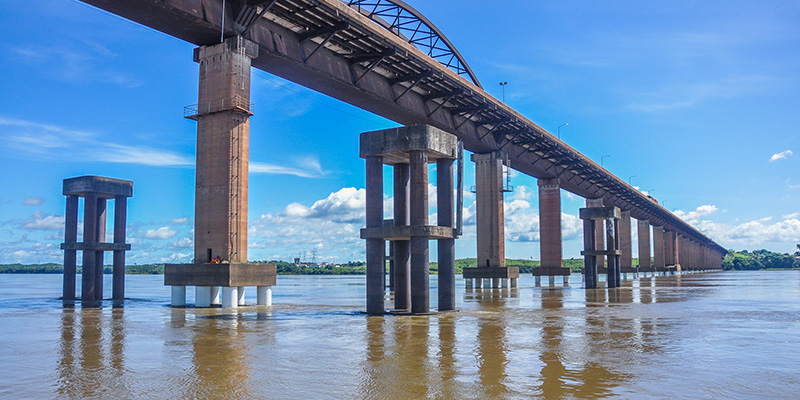Since last year, our Engineering team has been involved in services in the region of Marabá (PA). The target of the work is two Vale bridges. One is over the Tocantins River. Another, over the Jacundá River.
The railroad bridge over the Tocantins River, with its 2,340 m in length, is the main link between the center of Marabá and the peripheral districts. In addition, the bridge is crossed, in its central part, by the Estrada de Ferro Carajás, which serves the transport of cargo and passengers between the states of Pará and Maranhão.
Detailed inspection services are being carried out on the bridge in accordance with ABNT NBR 9452 – Inspection of Bridges, Viaducts, Concrete Walkways – Procedures, as well as the inspection of its metallic structure, considering non-destructive and destructive tests. Two prominent points in this work are the use of drones and 3D modeling. Drones, unmanned vehicles, are strategic for starting work, as they allow a first mapping of anomalies through photos. Thus, it is possible to select the points that need to be investigated further. We hired Dronus, which used Phantom and Matrice drones. The latter was essential as it has the ability to access the bottom of the board. The results of the field and drone inspections are being modeled in 3D using Revit software to graphically show the status of the work.
The Railway Bridge over the Jacundá River is close to the Mãe Terra indigenous reserve area. This bridge is also crossed by the Carajás Railroad. The work has a reinforced concrete structure approximately 180 meters long, which was the target of an intentional explosion in mid-2016. The following year, it was repaired and structurally reinforced.
In this bridge, the scope is based on the execution of instrumentation, numerical modeling of the structure by finite elements, analysis and interpretation of the instrumentation results and the numerical model, with the objective of defining the structural integrity, remaining useful life and safety coefficient of each structural element for the actual and projected loading of the Bridge. To facilitate access for bonding the extensometers, the solution was to hire and train climbers.
According to the Work Coordinator, Daniela David, there were many challenges to be overcome, but with the support of the entire team and the search for innovative solutions, it is possible to develop work with consistent results and that will facilitate the planning and execution of new services.

